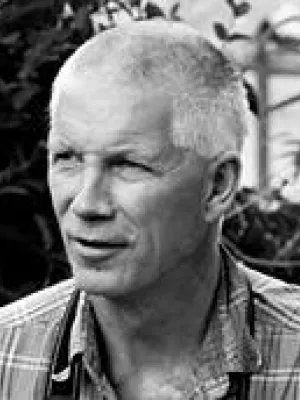
Jonas Ardö
Professor

Nutrient Balances as Indicators of Sustainability in acacia senegal Land use Systems in the Semi-arid Zone of North Kordofan, Sudan
Author
Summary, in English
The objectives of this study were: (1) to assess nutrient flows and balances at land management
systems and cropping seasons levels, and (2) to determine rate of nutrient depletion. The study
was conducted in dry lands of Northern Kordofan, Sudan, at El Demokeya Forest Reserve (lat.13°
16′ ′′ ′N; long. 30° 29′ ′′ ′E, and alt. 560 m), over three cropping seasons (2002, 2003 and 2004). Flows
and balances of organic carbon (OC), nitrogen (N), phosphorous (P) and potassium (K) in pure
and intercropped sorghum, roselle and grasses with Acacia senegal at low- and high-tree density
(LD 266 and HD 433 trees ha
-1
, respectively) were investigated. Sources of nutrient inflows were
organic matter (OM) from trees, gum Arabic, crop roots, atmospheric deposition, and N2fixation.
Outflows were harvested products, crop residues, leaching, gaseous losses and wind erosion.
Nutrient balances were positive in grass systems, but negative in pure sorghum and roselle.
Large variations exist between inter cropped sorghum and roselle systems. Nutrient balances
were positive during the poor cropping season (2002), while negative during the good season
(2003). Nutrient depletion was severe for all studied nutrients in pure sorghum and roselle, but P
depletion was remarkably more severe in roselle systems. For all systems, P availability is the
major determinant of sustainability. The study demonstrated that OM was essential for positive
nutrient balances. Hence, intercropping is considered as an appropriate option to enhance soil
fertility. Ways for adjusting the negative balancesin the context of sustainability were suggested.
systems and cropping seasons levels, and (2) to determine rate of nutrient depletion. The study
was conducted in dry lands of Northern Kordofan, Sudan, at El Demokeya Forest Reserve (lat.13°
16′ ′′ ′N; long. 30° 29′ ′′ ′E, and alt. 560 m), over three cropping seasons (2002, 2003 and 2004). Flows
and balances of organic carbon (OC), nitrogen (N), phosphorous (P) and potassium (K) in pure
and intercropped sorghum, roselle and grasses with Acacia senegal at low- and high-tree density
(LD 266 and HD 433 trees ha
-1
, respectively) were investigated. Sources of nutrient inflows were
organic matter (OM) from trees, gum Arabic, crop roots, atmospheric deposition, and N2fixation.
Outflows were harvested products, crop residues, leaching, gaseous losses and wind erosion.
Nutrient balances were positive in grass systems, but negative in pure sorghum and roselle.
Large variations exist between inter cropped sorghum and roselle systems. Nutrient balances
were positive during the poor cropping season (2002), while negative during the good season
(2003). Nutrient depletion was severe for all studied nutrients in pure sorghum and roselle, but P
depletion was remarkably more severe in roselle systems. For all systems, P availability is the
major determinant of sustainability. The study demonstrated that OM was essential for positive
nutrient balances. Hence, intercropping is considered as an appropriate option to enhance soil
fertility. Ways for adjusting the negative balancesin the context of sustainability were suggested.
Department/s
- Dept of Physical Geography and Ecosystem Science
- eSSENCE: The e-Science Collaboration
Publishing year
2013
Language
English
Pages
93-112
Publication/Series
Standard Scientific Research and Essays
Volume
1
Issue
5
Links
Document type
Journal article
Publisher
STANDARD RESEARCH JOURNALS
Topic
- Physical Geography
Keywords
- Organic carbon
- Nutrient depletion
- Sustainability
- cropping seasons
- Gum Arabic
Status
Published
ISBN/ISSN/Other
- ISSN: 2310-7502

